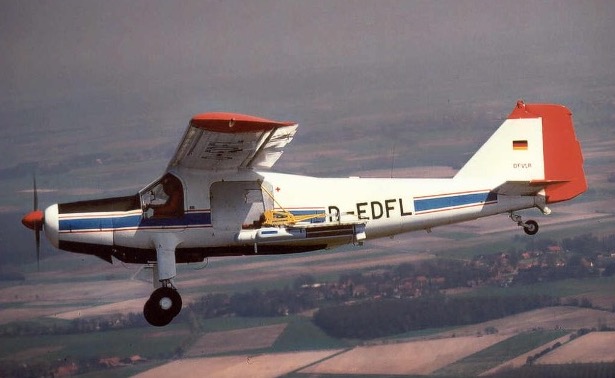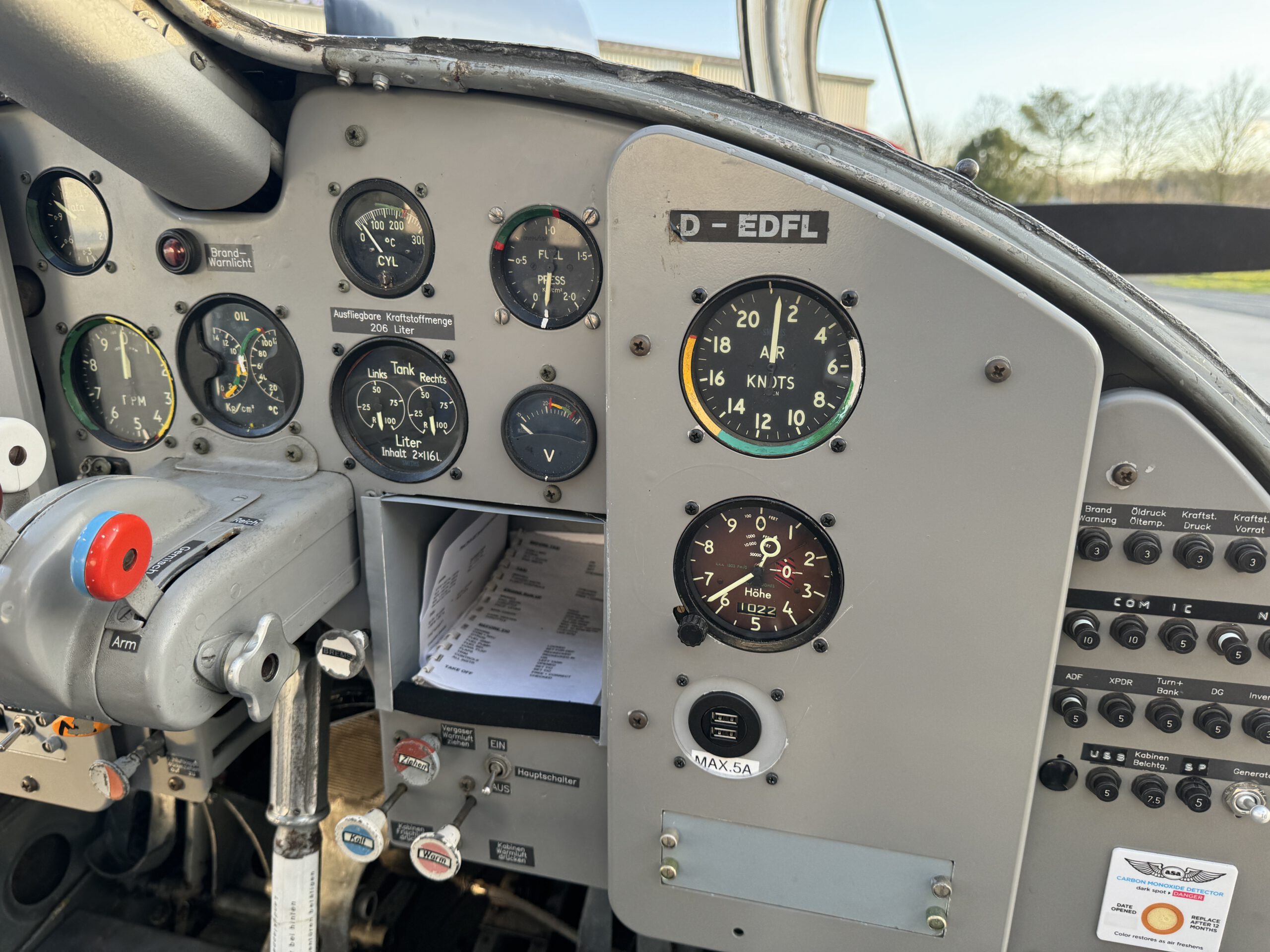
1959 Dornier DO27-B3 - New Engine
Discover the Dornier 27 – A Classic of Aviation
The Dornier 27 is more than just an aircraft; it’s a true piece of aviation history. Built for operations on short and unpaved airstrips, this plane combines the ruggedness of a workhorse with the elegance of classic aircraft design. Developed in the 1950s, the Do 27 has earned a worldwide reputation as a proven and reliable STOL (Short Take-Off and Landing) aircraft.
Outstanding Short Take-Off and Landing Capabilities
Powered by a strong Lycoming GO-480 engine, the Dornier 27 can take off and land on the shortest of runways – ideal for challenging airstrips, remote locations, or adventure flights.
Classic Design with Functional Technology
The Do 27 stands out with its iconic high-wing design, offering excellent visibility and stability. Its spacious cabin can accommodate up to six people, with a robust and practical layout suited for diverse missions, from passenger transport to aerial photography and expeditions.
The Charm of the Past with the Reliability of the Present
The Dornier 27 combines historical authenticity with impressive technical performance that remains relevant today. Aviation enthusiasts and demanding pilots alike appreciate its dependable technology, long range, and ability to fly off the beaten path.
Experience an unparalleled flight sensation and discover the Dornier 27 – an aircraft that continues to make history.
Asking Price: INQUIRE
SPECS
- S/N 392, built 1959
- TTSN: 3630h / 4850 landings
- Lycoming GO-480-B1A6 Engine TSO 0h / TBO 1400h, overhaul in 08/2025
-
Hartzell HC-82-V20-1B / V101 33D-3 Propellor TSO 150 hrs / TBO 1500 hrs, 5 yrs LTA insp. in 2022
- -B3 version features Dual Flight Controls, making the aircraft perfect for tailwheel training
- 4 or 6 seat configuration possible (two seat benches included)
-
On the bottom side to the rear of the pilots, there is a large camera hole facing directly downwards for photo missions. This was used for reconnaissance missions on the military versions of the Dornier 27. Furthermore, it is possible to open the rear doors in flight, making the aircraft perfect for aerial photography as well as parachute dropping.
-
The Dornier 27s speed range from stall speed (24 kts) to never exceed speed (178 kts) is remarkable and makes it worth to see on airshows.
Its slats and flaperons support the STOL-abilities of the aircraft. Together with its useful load of 600kg, this is a very versatile airplane.







HISTORY
Built in 1959, this Dornier 27 (s/n 392) was used as a research platform starting in 1960. Registered as YA+913 and later 56+84, the aircraft was assigned to ESt 61 (Erprobungsstelle) in Oberpfaffenhofen and later served the German Test- and Research Institute for Aviation and Spaceflight (DFVLR) in Braunschweig. She is still wearing the latter’s paint scheme today.
In 1969, the aircraft was equipped with one of the first Fly-By-Wire systems for flight test. During demonstration flights in 1971, NASA-astronaut Neil Armstrong was on board of the aircraft, taking control of the side stick.
In 1994, the meanwhile D-EDFL-registered aircraft was transferred to the flying group of the German Aerospace Center (DLR) and remained in Braunschweig for another 24 years, being used for glider towing on behalf of the DLR and air-to-air photo missions for various experimental flights.
Since 2018, the aircraft is privately owned. With its appearance on various airshows, it continues to commemorate the aviation achievements of the Dornier 27. The aircraft received various upgrades and restorations from Garmin avionics to an overhauled engine by GO480-specialist Flugmotoren-Reparatur Heinz Dachsel GmbH.
Yes, Neil Armstrong was here!
In 1969, the aircraft was equipped with one of the first Fly-By-Wire systems for flight test. During demonstration flights in 1971, NASA-astronaut Neil Armstrong was on board of the aircraft, taking control of the side stick. There might be moon dust in the cockpit!

AVIONICS
- GARMIN GNC 255A VHF COM/NAV 8,33 kHz
- FLIGHTCOM 403 6-place intercom
- GARMIN GTX 330 Mode S Transponder
- ACK A-30 ALT Encoder
- Bendix King KG102A Directional Gyro with slaving unit
- Bendix King KI252A HSI
- Bendix King RMI KI-229 (ADF receiver currently not installed, wiring exists for Becker AD2070)















